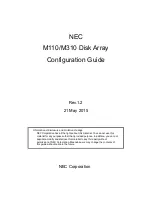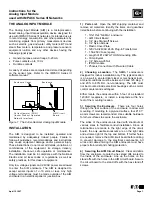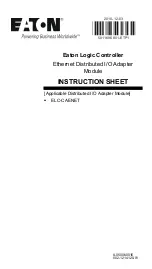
Loop Editing
When in the lock in mode the nudge buttons may also be used for loop editing. In this
case the beginning and the end of the loop may be adjusted (i.e. increasing or
decreasing the length of either end of the loop is possible, within the limits).
Pitch shifting in the lock in mode is also possible; the effect obtained can be likened to
varispeed on mechanical tape loop systems.
Computer Control
Computer control is effected by the use of the keypad:
Keys A and B
These select the audio channel to be processed either A or B, depressing either will cause
the delay setting for that channel to be displayed (in milliseconds) and the relevant
identifier LED immediately below the display to be lit (A or B). These keys are also used
for loop editing in the lock in mode.
Key C
Pressing the ‘C’ key after selecting the appropriate channel (A or B) results in the pitch
ratio information being displayed and allows the operator to change the pitch of the
signal. In this case LED ‘C’ glows in addition to the channel identifier LED A or B.
Keys 0 - 9
Keying in a delay setting will cause entry into the display only and will not affect the
programme until the data is entered into the unit by depressing the # key. Until the # is
depressed the channel identifier LED will flash indicating temporary data. The display
only reflects the contents of the DDL once the # key has been depressed and the channel
identifier LED has stopped flashing.
Key *
This key is used for decimal point entry when using the pitch shift and delay selection in
excess of one second.
Key D
Depressing this key causes the current store number to be displayed in the format ‘Str.5’.
To change the current store a single numeral is typed in the range 1 to 9. No enter
keystroke (#) is required, the system will immediately enter into the delays and pitch
change settings programmed within that store and all subsequent entries will be
retained in that store. If instead of a numeral, A or B is then depressed the system will
display the delay contents for that channel (see above) and store will remain unaltered. If
the ‘0’ key is pressed immediately after the ‘D’ key then all of the store locations will be
cleared - so be careful.
Key #
This is the ‘Enter’ key which must be depressed to enter a delay into the unit. It is also used
for single shot looping whilst in the lock in mode.
S-DMX User Manual
Issue 3
Page 9
Summary of Contents for S - DMX
Page 3: ...S DMX S DMX User Manual Issue 3 Page 1 ...
Page 4: ...S DMX User Manual Page 2 Issue 3 ...
Page 24: ...S DMX User Manual Page 22 Issue 3 ...
Page 30: ...S DMX User Manual Page 28 Issue 3 ...
Page 32: ...S DMX User Manual Page 30 Issue 3 ...
Page 33: ......












































